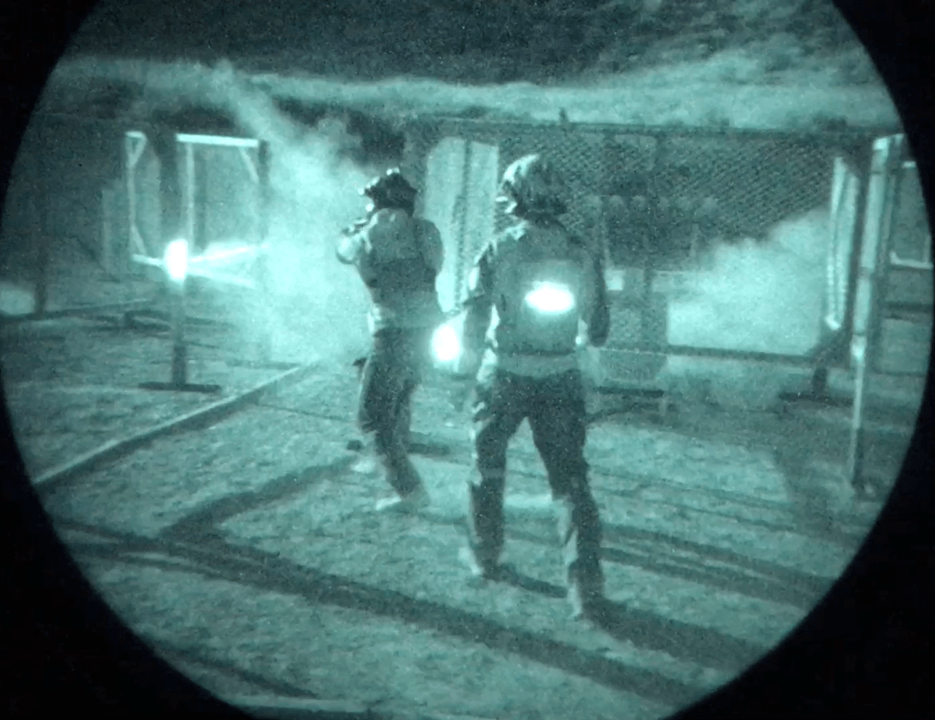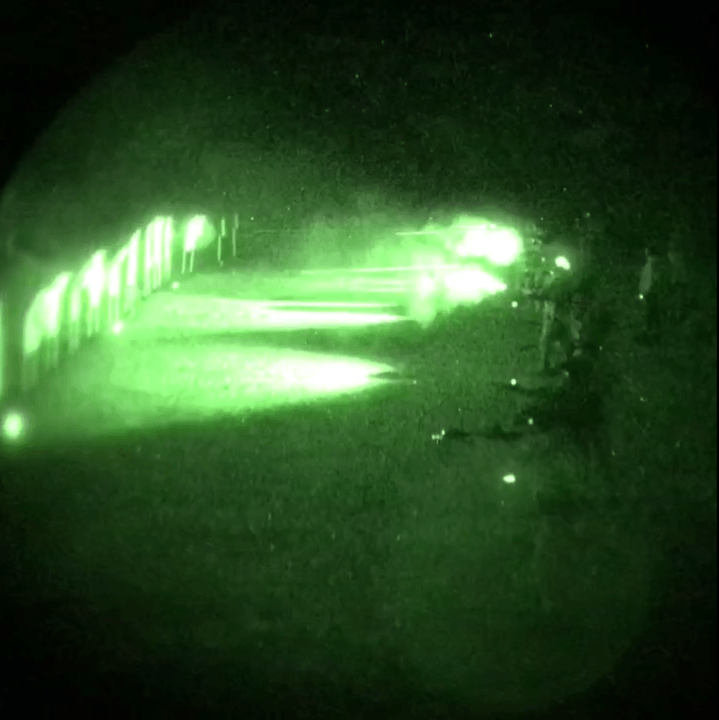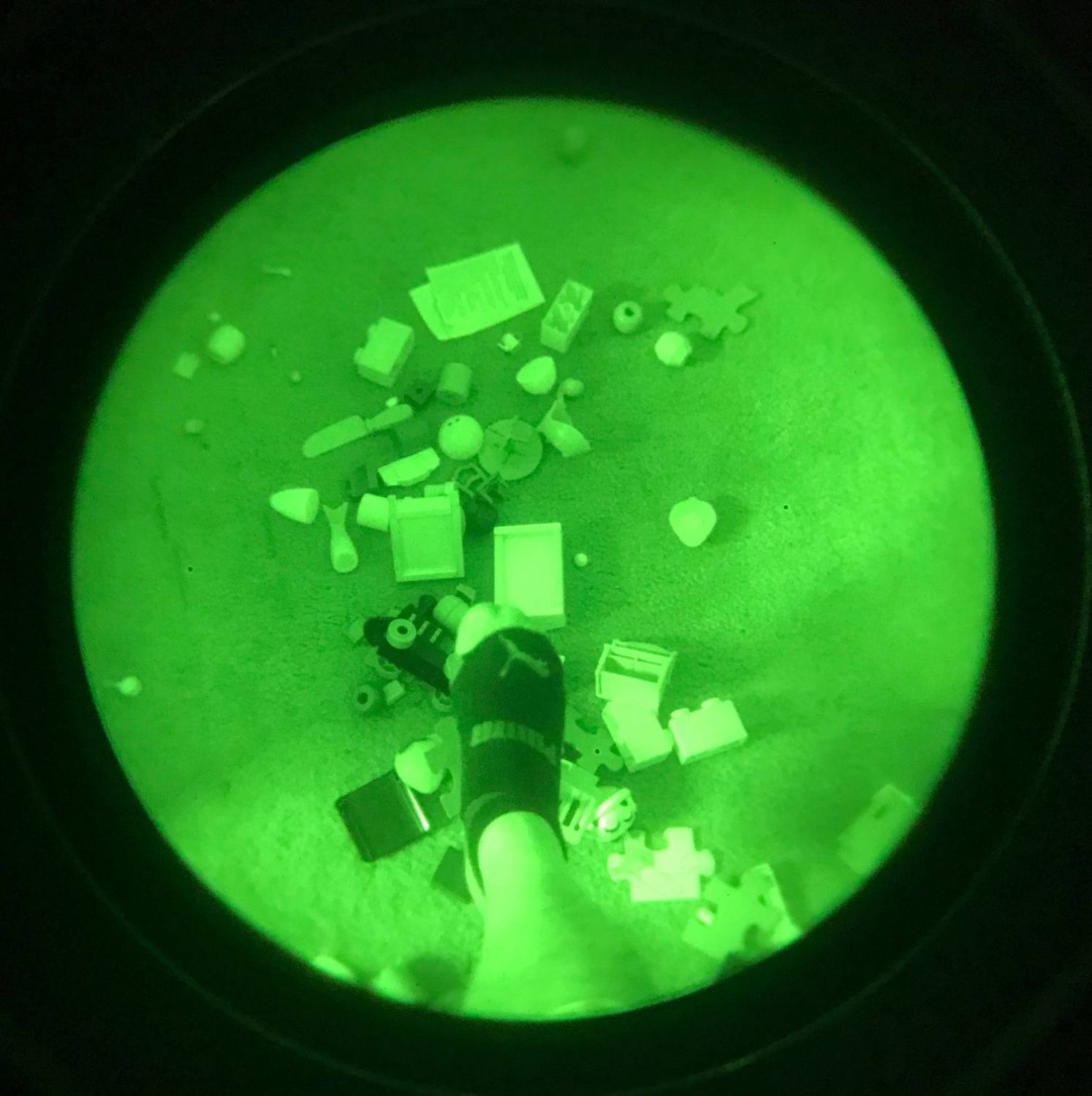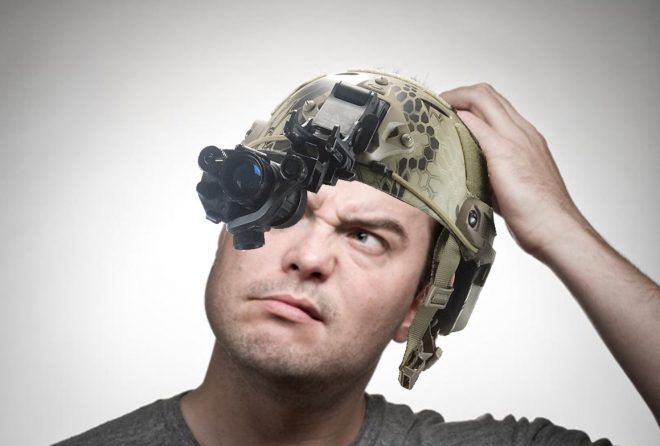Let’s take a break from the expensive gear posts and start at that pertain to night vision. There are techniques and things I take for granted regarding night vision. This is just because of my experience with night vision and my voracious appetite for night vision related information and content. They seem like common sense to me but not everyone has had the experience I have had with night vision and some people have owned night vision longer than me but have hardly used them. So I will spend this week’s Friday Night Lights on a primer article about how to use NODs for beginners.
Finding Your Place In The Night Vision World

Monthly night match with Deadwood Boys USPSA club.
Night vision is a gear specific device that can help augment your ability to see in low light areas. Well after you save up and buy your first Night Observation Device (NOD) what do you do with it? A common answer I hear is to go take a night vision course. Ok, well that is not always feasible for some. Scheduling for night vision classes is not that frequent and rarely do you have one in the state you reside in. So now you gotta spend more money flying to take a class on night vision. While the classes are very helpful, a lot of what they do you can learn on your own and practice on your own time. The problem is finding a place to do this.

Greenline Tactical Night Fighter’s Course in the Los Angeles area.
The first hurdle is to find a place to go shoot at night. This is a struggle for many. The only real solution is to start seeking out people who share your interests. Find people who have access to private land with the ability to shoot at night. If that is not feasible and you have no friends who can help, then try reaching out to local shooting clubs and ranges. Most clubs and ranges will have knee jerk reactions to shooting in the dark and this merely stems from ignorance and fear. That whole “leads to the dark side thing” is good. You can address a lot of their concerns. One is safety. If you are shooting with night vision you typically already have a decent grasp of shooting in the day time. If the club has meetings at night you can show them your night vision device and how being able to see in the dark is actually safer with night vision. You can just see more at night. Another concern that many clubs have will be noise abatement. If a range is near neighborhoods they have noise ordinances and you can alleviate some of that with shooting suppressed. Obviously, this does not work for some as not all states allow NFA items but it is a possibility for those who have access to suppressors. It also helps if you use a subsonic caliber like pistol caliber guns and/or rimfire guns. It’s not as sexy but you can work on the fundamentals all the same and get more time shooting behind NODs.
Another avenue to pursue are indoor ranges. Since they are nearly hermetically sealed, the noise is not really an issue. If you talk to the range and express what you want to do they may be open to it. Some people are adverse to the idea of shooting with the lights off. This is usually a safety concern. They don’t know you and you might not know them. You may need to be a regular there so they are comfortable with you shooting on your own and in the dark. It’s not quick but it is a possibility. When I lived in NY, it took a little convincing to get my club to turn the lights off when we practiced USPSA during the winter at an indoor range. Their immediate reaction was “why would you want to do that?”. First of all it is a lot of fun. Secondly shooting in the dark is a lot harder than shooting with lights on so there is that challenge. The most important reason is from a practice/training aspect. Having to use your firearm is a 24/7 concept. Half the day is in darkness so getting better acquainted with shooting in low to no light is a good thing to practice as long as it is done responsibly. This usually wins them over. Of course, you can bridge the gap and recommend having a group event. Some shooters can try shooting with weapon mounted lights etc. While you rock night vision. Make these events fun. Many shooters will immediately find out that shooting in the dark is a lot harder than shooting with the lights on. Some will relish the challenge. And for some, it will be a real eye opener of a skill they sorely lack. If possible, setup multiple targets with a little bit of movement. While doing so safely you can learn a LOT from these practice sessions beyond the stagnant standing and shooting at a non moving target.
Setting Up Your NODs
Hopefully you have squared away a place to shoot at night. The second step is to set up your NODs. Whether it is a simple PVS-14 or dual tube setup there are specific ways to set your NODs to you. First, you want to check your helmet setup. Your night vision device has some weight. Add to that the mount and shroud on a helmet and you have a good chunk of weight pulling the front of your helmet down. Using a counterweight can help offset the weight of your NODs. Try holding your helmet up with your fist. With the NODs mounted your helmet will tilt downwards. Add some weights to the back using a battery pouch or counterweight pouch so that your helmet balances on your fist.

Find something to focus on about 10 ft away with text or detail
Now that you have a better balanced helmet let us focus on . . . focusing your NODs properly. Don Edwards of Greenline Tactical uses this technique in his Night Fighters Course. You want to adjust “front – back – front”. So take your helmet-mounted NODs. Stand about 10 feet from something with detail. I typically have people look at a car license plate. Focus the front objective so that the license plate is in sharp focus. The text on the plate is something everyone is familiar with so it is easy to tell if it is in focus. Next, you adjust the diopter of the rear eyepiece. Use small movements. Also if you are using dual tubes, only do one side at a time. Close one eye so you can focus on the other side. After you got the rear diopter set then go back to the front objective and reset the focus back out to infinity. I like to use stars. When using dual tubes check your focus one side at a time. You may need to make a minor adjustment. As you play with the focus you will see stars get bigger and smaller. Make them as small as possible and as round as possible. After you do that you may need to nudge the rear diopter a little bit to make the two images look similar. Focus on one star. Make sure both tubes match as best as possible to each other.
How To Use Night Vision On The Move

Watch where you are going, especially where your feet will be next.
Night vision is not solely a firearm accessory. Although it is fun to shoot with NODs, you can experience the night without a gun and practice moving with NODs anywhere that it is dark. I like to think of “moving with NODs” like living in a house with children. If you have children you know that toys and small objects will be left all over the floor. No matter how much you try to instruct them, there will be things left on the ground. Your house is like a minefield now. So what do you do? You instinctively scan the floor for any possible foot hazard. This is how you should use night vision. Typical NODs only have a 40° FOV. Some like the FLIR BNVD-51 boast a 51° FOV. If you have a lot of money and have Quad tubes they have a 97° FOV, but that is side to side not up and down. The point is you will see a lot less than you are used to. So you will need to scan the ground you intend to walk over to spot any trip hazards.
Hopefully This Helped You How To Use Night Vision
If there is anything you are unsure of or have questions as a newbie to night vision please let me know and I will try to answer your questions the best of my ability. Night vision can be a lot of fun. What helps is trying to find like minded individuals that can enhance your enjoyment of NODs. Go out and experience the dark with confidence and night vision.
 Your Privacy Choices
Your Privacy Choices